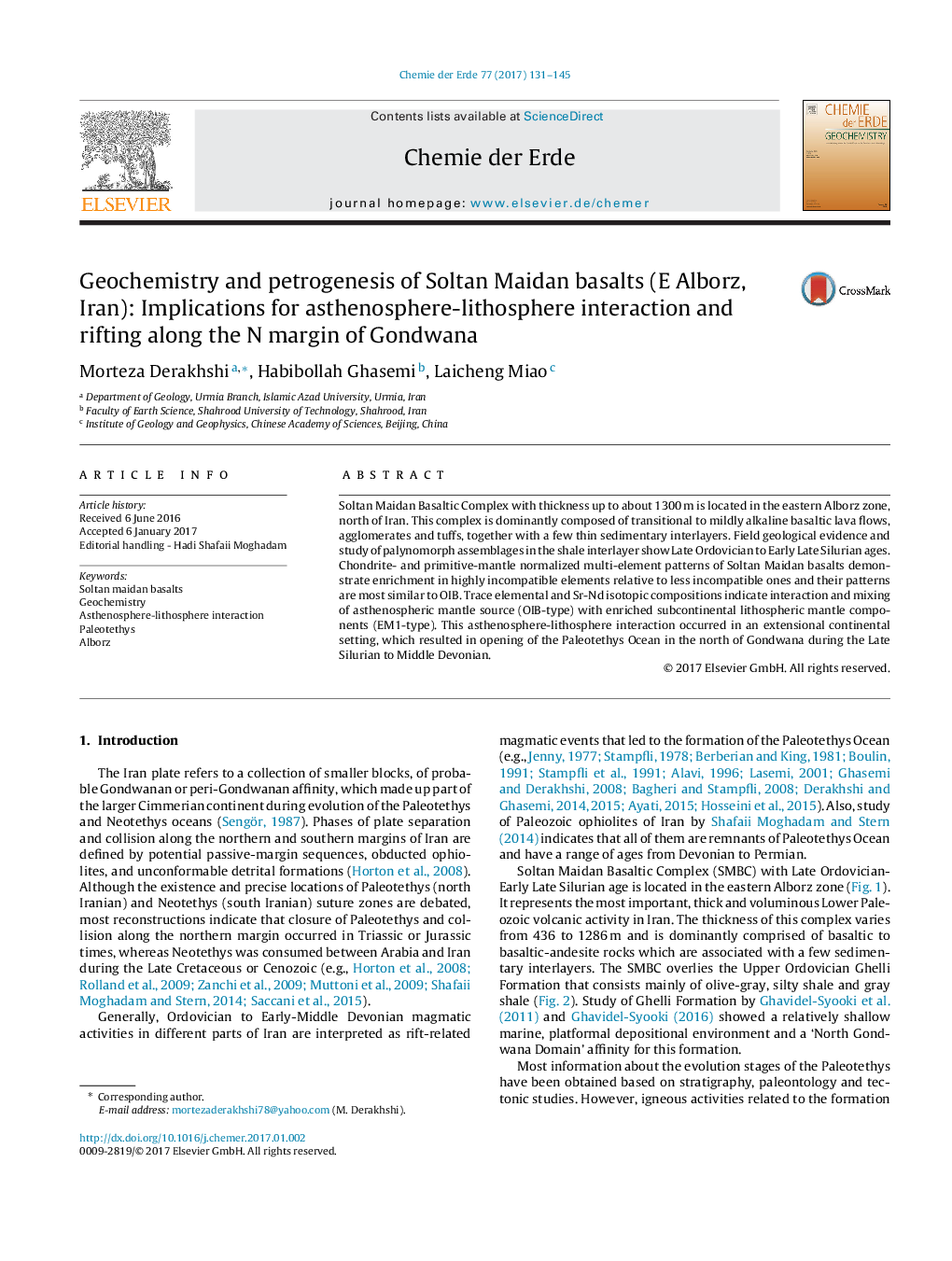| Article ID | Journal | Published Year | Pages | File Type |
|---|---|---|---|---|
| 5745678 | Chemie der Erde - Geochemistry | 2017 | 15 Pages |
Soltan Maidan Basaltic Complex with thickness up to about 1300Â m is located in the eastern Alborz zone, north of Iran. This complex is dominantly composed of transitional to mildly alkaline basaltic lava flows, agglomerates and tuffs, together with a few thin sedimentary interlayers. Field geological evidence and study of palynomorph assemblages in the shale interlayer show Late Ordovician to Early Late Silurian ages. Chondrite- and primitive-mantle normalized multi-element patterns of Soltan Maidan basalts demonstrate enrichment in highly incompatible elements relative to less incompatible ones and their patterns are most similar to OIB. Trace elemental and Sr-Nd isotopic compositions indicate interaction and mixing of asthenospheric mantle source (OIB-type) with enriched subcontinental lithospheric mantle components (EM1-type). This asthenosphere-lithosphere interaction occurred in an extensional continental setting, which resulted in opening of the Paleotethys Ocean in the north of Gondwana during the Late Silurian to Middle Devonian.
